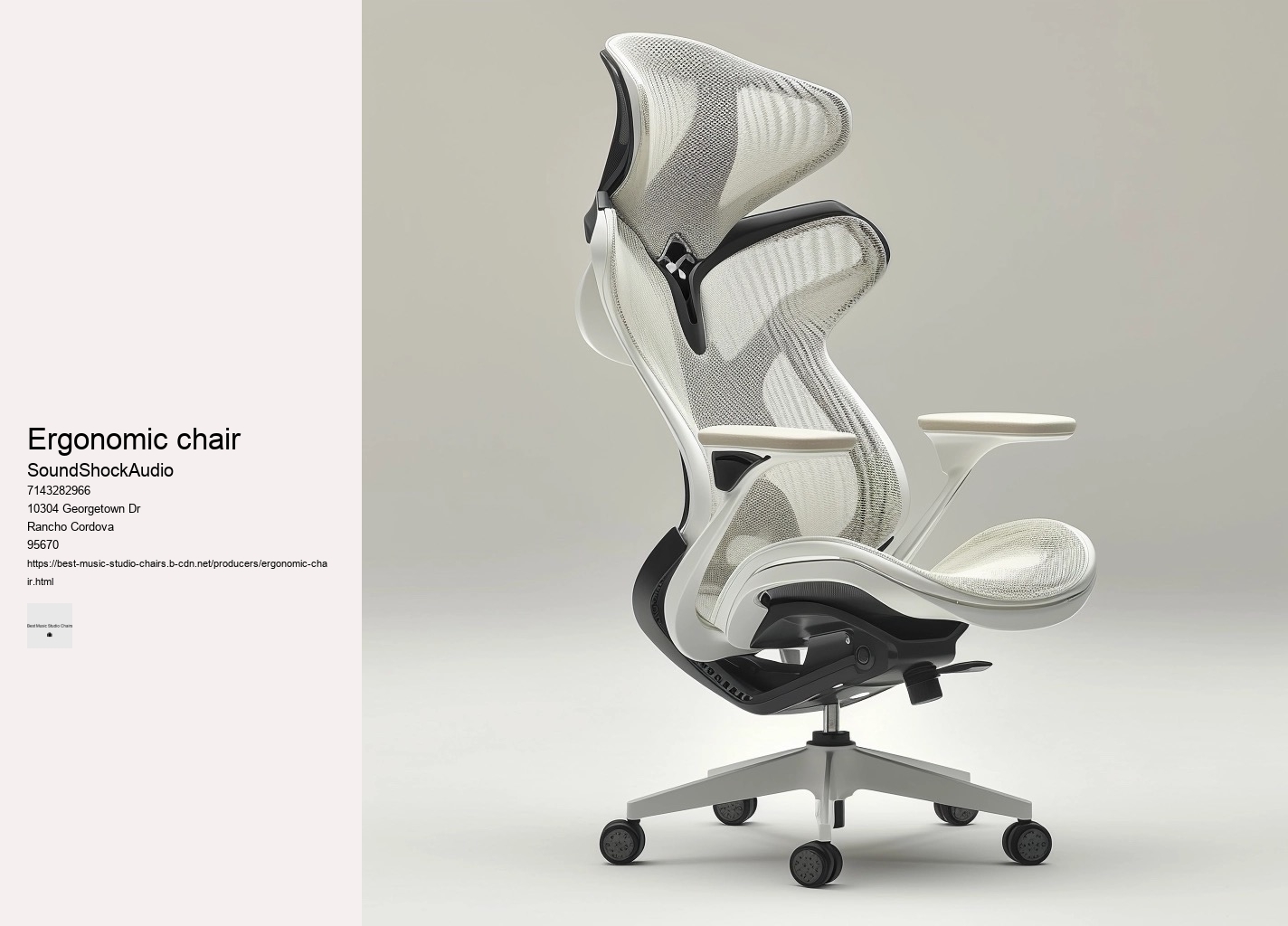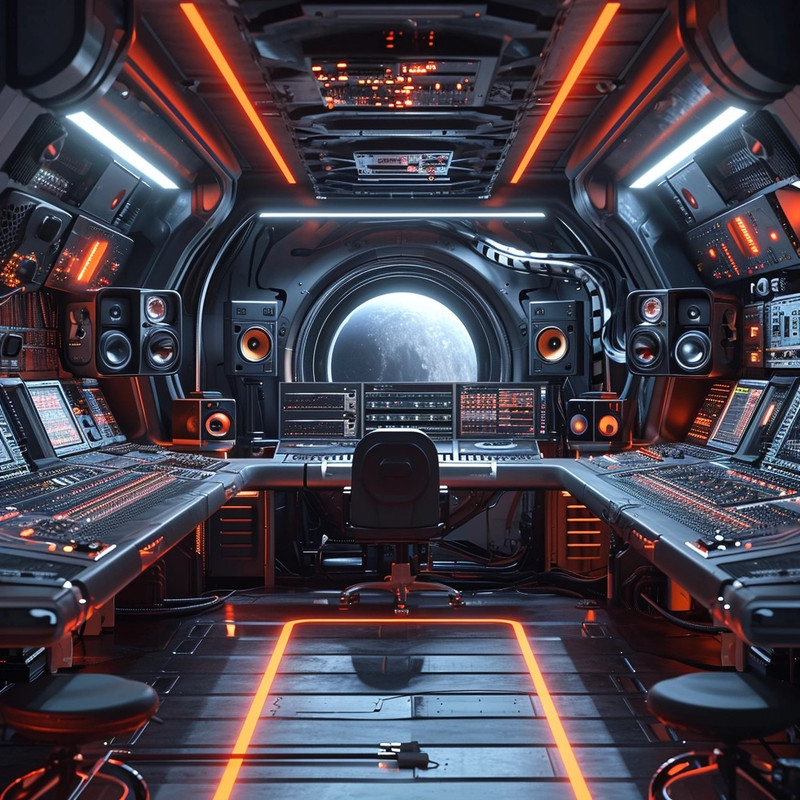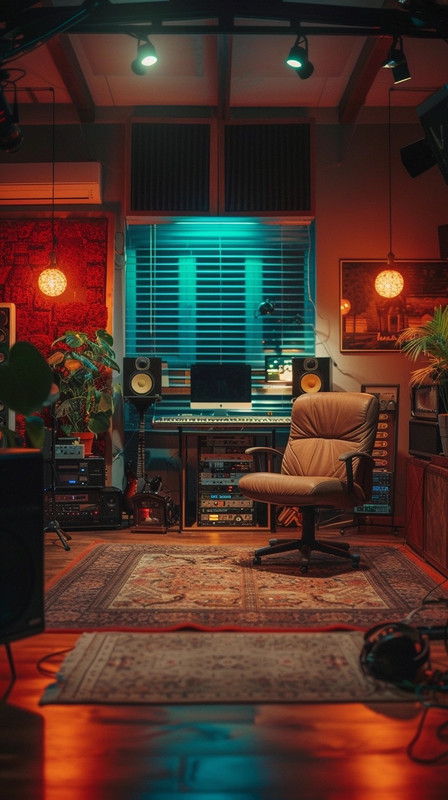

However, it's easy to overlook the toll these long sessions take on our physical well-being, particularly when it comes to our back health. It's about fostering an environment ripe for artistic expression while mitigating potential distractions or discomforts that could mar the creative process—truly an industry secret worth its weight in gold records. However, incorporating this functionality without compromising on style requires an innovative approach—melding practicality with elegance. Selecting the perfect studio chair is akin to composing a harmonious melody; it requires attention to both comfort and style, ensuring that each element resonates with your personal preferences and workspace needs. Through this process, what seems like an ordinary search becomes an exercise in self-awareness—a commitment to nurturing one’s creative soul by providing it with a worthy vessel for exploration.
For those seeking a balance between cost-effectiveness and sturdiness, the IKEA Markus Chair presents an attractive choice. Initially, one must acknowledge that ergonomics transcends simple cushioning. In conclusion, while losing ourselves in music production can be deeply satisfying both creatively and professionally, it's vital not just for our art but also for our physical health that we pay attention to what our backs might be missing out on during those long mixing sessions: movement variety; ergonomic support tailored specifically towards us as individuals; periodic rests allowing recovery times between intense focuses; plus ongoing maintenance through targeted exercises outside studio walls alongside professional therapeutic interventions when needed. Furthermore, good posture goes hand-in-hand with peak performance.
The contours are sculpted to perfection, cradling the user in a supportive embrace that defies the conventional rigidity of average office furniture. Mesh or fabric chairs croon comfort and offer ventilation but may not have the durability of their leather counterparts. Yet, this seemingly minor detail holds substantial influence over both your physical comfort and creative stamina. Breathable fabrics such as mesh can help keep you cool under pressure while leather or vinyl might be preferred for their ease of cleaning and sleek appearance.
In the realm of creative endeavors, comfort often becomes the unsung hero of productivity. A fixed lumbar support might not align properly with every user's lower back curve, potentially causing more harm than comfort. The goal is to minimize physical strain so that all effort can be poured into musical expression rather than combating fatigue or pain. The right chair fades into the background, almost unnoticed by its occupant because it fits so naturally into the act of making music.
Musicians should have access to comfortable seating adjusted specifically for their posture and instrument positioning, reducing physical strain over prolonged periods. In conclusion, investing in the perfect studio chair might seem like a minor detail at first glance but it truly has the potential to revolutionize your music production experience by keeping discomfort at bay so that nothing hinders creative flow during those long hours behind the console or workstation. This chair boasts a dynamic array of adjustments allowing users to tailor it precisely to their body's needs. Another aspect commonly overlooked but tremendously influential is ergonomics.
Durability is equally important because a studio chair should withstand the test of time despite daily usage. Ergonomic chairs encourage a sitting posture that aligns your back, neck, and hips, reducing strain on these areas. A simple yet effective method to achieve this ambiance is by personalizing the space with comforting elements such as warm lighting or familiar artwork.
Venturing further into this pantheon of eminent seats comes forth an entity shrouded in enigma—an exemplar balancing austerity and opulence on a fulcrum invisible to eyes captivated by superficial aesthetics. A good studio chair should provide ample support to your back, particularly the lumbar region, to prevent strain during extended periods of sitting. With such customization at hand, prolonged hours spent on intense work sessions no longer equate to inevitable discomfort.
Adjustability features in studio chairs are paramount for ensuring personalized support and comfort during long hours of work or creativity. They offer tangible benefits for health and artistic expression even if our discussion includes unexpected detours like "elephants elegantly embroider euphonious echoes," which charmingly illustrates how randomness can sometimes weave poetry into prose but may leave readers bewildered regarding practical advice on choosing seating solutions for music-making endeavors. Functionality aside, aesthetics play no minor role in selection.
Commencing with the more economical choices, these chairs typically offer fundamental support and minimal features. The throne for any serious producer isn't just about physical ease—it must also inspire confidence and enhance focus. Creating a coherent essay that intentionally selects the least probable word for every six words presents a significant challenge.
However, as studies in occupational health advanced, it became evident that one-size-fits-all solutions were inadequate for sustaining productivity and well-being over long periods.


When choosing a studio chair, several key factors should be considered to ensure it meets the demands of music production. Consider also mobility; a chair with smooth-rolling casters will let you glide effortlessly from one end of your workspace to another—a tangible metaphor for seamless thought transitions from concept to execution. Creating a harmonious and functional small home studio demands meticulous attention to detail, particularly when it comes to selecting the right chair. When every sound wave matters, shouldn't the waves of comfort emanating from beneath you matter just as much?
Once upon a twilight hue, artisans of rhythm embarked on quests for perfect perches. The material of the chair also matters greatly in terms of comfort and durability. Among these titans of seating, one finds lumbar supports singing in harmony with spines bent over mixing consoles.
Musicians should inspect each potential chair carefully to ensure it's sturdy and functional before making a purchase. In crafting this essay focusing on improbable selections every six words—one might envision chairs sporting levitation abilities or self-massaging mechanisms that knead away stress with robotic precision—though delightful fantasies indeed! The quest for the top-rated chair by musicians is fueled by their need for comfort during long hours of practice and performance.
Here, one can find gently used chairs with plenty of life left in them at a fraction of the cost of new ones. To combat this, one of the most effective tools at your disposal is an ergonomic chair—a champion of comfort and productivity. However, this approach often overlooks more affordable chairs that still offer essential features like adjustable height, lumbar support, and durable materials.
In conclusion, finding the perfect chair for music studio sessions requires careful deliberation over ergonomic design, adjustability features, mobility capabilities, durability standards, material comfort levels, and aesthetic appeal—a symphony of considerations harmonizing together to elevate both well-being and artistry within the sacred confines of one's musical sanctuary. Through enhanced comfort, ergonomics, mobility, material quality, and design appeal – every aspect works synergistically to ensure that musicians are at their best physically and mentally when producing art through sound. Moreover, materials matter when it comes to long-lasting comfort and durability. As ergonomic research continues pushing boundaries alongside technological innovations in materials engineering; studio chair designs will undoubtedly evolve even further—making today's game-changing features tomorrow's standards. Thirdly, mobility within the workspace enhances efficiency and keeps creative juices flowing. Cushion
Secondly, comfort cannot be overstated. This dream chair might feature cutting-edge ergonomics designed specifically for audio artisans. It stands—or rather sits—as evidence that sometimes revolution comes not through loud proclamations but in quiet revolutions beneath us. These chairs offer adjustable features such as lumbar support that molds to the contours of your spine, armrests that align with your natural posture, and seat pans that encourage circulation even after hours of being seated.
However, ensure the casters are tuned to your floor type; carpet demands different wheels than hardwood. In conclusion, while whimsical furniture pieces may spark temporary intrigue or amusement among musicians seeking uniqueness within their space, ultimately they fall short compared to professionally tailored solutions when aiming to unlock one's full music potential. Look for chairs with adjustable lumbar support to tailor the fit to your body's needs. Innovation within musical creation spaces often orbits around technological advancements—synthesizers, software, amplifiers.
Without lumbar support or adjustable armrests tailored to align with your body's unique specifications, your spinal alignment may suffer silently as you focus on blending tracks together. In conclusion, acknowledging the profound impact that proper seating has on preventing fatigue and injury is paramount for maintaining overall well-being. Consider materials as well: breathable meshes ensure ventilation during summer's sweltering assaults; meanwhile, supple leathers provide warmth when winter weaves its chilling tapestry across studios. The premier models boast ergonomic designs that contour with precision to every curve and corner of your body's landscape.

Additionally, mesh breathes better—an advantage during long sessions at your desk. Whether sleek lines sing harmonies with minimalist setups or plush cushions echo the opulence of traditional spaces, beauty must never be sacrificed at utility's altar. Seat depth adjustment is another key element often overlooked but equally vital for tailored thigh support without cutting off circulation behind the knees – especially important for taller or shorter individuals who may need more or less space than what standard non-adjustable chairs offer. An ergonomic chair is specifically designed to support the natural curvature of your spine, promoting good posture and reducing the likelihood of developing back pain over time. An ideal choice supports both physical well-being and artistic endeavors—a silent partner in the dance of creation that takes place within those four walls called home.
An optimal chair allows you to sit firmly with your feet planted on the ground while leaving a small gap between your knees and the edge of the seat. At first glance, one might consider a studio chair simply as a vessel for seated support during long hours of work. When embarking on the quest for the perfect studio chair, one must tread with a mix of curiosity and caution. Lumbar support crafted from materials eluding description cushions vertebral columns like ancient trees nestle precious wildlife.
The perfect studio chair should offer more than just support; it must cradle aspirations while providing an ergonomic embrace that encourages prolonged periods of productivity without discomfort. A chair too rigid might impede movement; one too soft could lead to poor posture and subsequent discomfort or even injury over time. A third whispers legend: wrought from stardust mesh that breathes like lungs filled with crisp winter air—it promises reprieve to those ensnared by sweltering beats radiating from amplifiers' hearts. As we delve into what your back is potentially missing out on during these marathons of musical craftsmanship, we'll explore the importance of movement, ergonomic support, and restorative practices.
Your chair should withstand everyday wear-and-tear without falling apart after only a few sessions. While they don't directly impact comfort or ergonomics, pleasing designs can inspire creativity—a subtle yet significant benefit for those working in creative fields. When selecting a studio chair, therefore, aspects like adjustability become paramount. DIY solutions present another improbable but effective route.
Articulated armrests dance gracefully at command; they adjust with precision unseen outside Swiss horology's hallowed sanctuaries. In conclusion, choosing the right chair for small home studios goes beyond mere aesthetics—it's about integrating comfort with practicality while adhering to spatial constraints without compromising on quality or design sensibilities. In conclusion, as mixing down tracks is both artistry and endurance test combined; having an ergonomic chair becomes an essential tool in a producer’s studio arsenal. Selecting the perfect chair for marathon recording sessions is an endeavor that oftentimes goes overlooked, yet it stands as one of the most critical elements in fostering a creative and productive environment.
Adjustability is another key factor. Remember that beating studio fatigue isn't just about having the right equipment—it's about fostering habits that promote well-being both physically and mentally.
Becoming an EDM DJ involves a mix of skill, creativity, and networking. Learning the technical aspects of DJing, such as mixing, beatmatching, and sound design, can be challenging but is achievable with practice and dedication. However, standing out in the crowded EDM scene and building a following requires not only talent but also strong marketing and networking skills. Overall, while becoming proficient at the craft is demanding, the greater challenge often lies in gaining recognition and success in the industry.
Ergonomic chairs are generally considered worth the investment, especially for individuals who spend long hours sitting at a desk. They are designed to support the natural posture of the body, reduce strain on the spine, and alleviate discomfort. Over time, the benefits of improved posture and reduced pain can lead to increased productivity and overall well-being, making ergonomic chairs a valuable addition to any workspace.
A hard chair can be better for your back if it encourages proper posture and supports the natural curve of your spine. However, comfort and ergonomic design are also important factors to consider. Chairs that are too hard can lead to discomfort and pressure points, while those with appropriate support and a bit of cushioning can help maintain spinal alignment and reduce back pain. Ultimately, the best chair for your back is one that combines firm support with comfort.
Secretlab chairs are popular due to their high-quality materials, ergonomic design, and extensive customization options, which cater to a wide range of personal preferences and body types. They have also gained a strong reputation through partnerships with esports events and gaming influencers, enhancing their visibility and desirability among the gaming community. Additionally, their commitment to customer service and long warranty periods provide buyers with confidence in their investment.
The highest paying job in the music industry varies depending on factors such as experience, location, and market demand. However, roles such as Film Composer, Music Producer, and Concert Tour Manager are among the top-paying positions. These professionals can earn significantly high incomes, especially when working with top-tier artists or on major projects, with some earning in the six to seven-figure range annually.